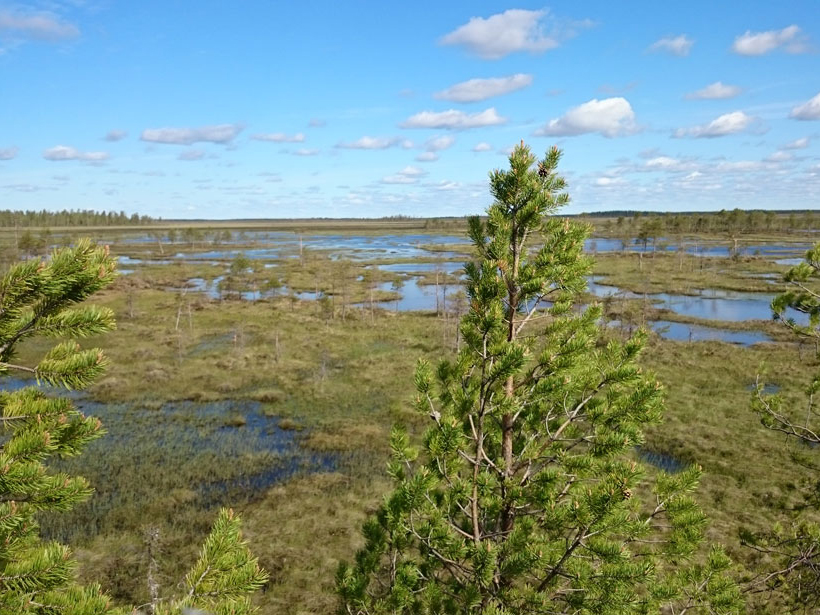Source: Global Biogeochemical Cycles
Although methane (CH4) is a potent greenhouse gas, the relative contributions of its various sources to the global budget are still poorly constrained. In wetlands, different metabolic and transport processes, as well as the variety and extent of vegetation, affect the rate at which methane is emitted as well as its isotopic composition. Although these processes are known to produce varied isotopic signatures on local scales, it is uncertain whether wetland emissions that reach the broader atmosphere have a more coherent signature.
To determine whether a uniform methane isotopic signature can be identified from specific wetlands, Fisher et al. analyzed hundreds of samples collected in and above five Arctic wetlands in northern Norway, Sweden, and Finland. Using three separate collection methods, the team compared the isotopic compositions of samples gathered at the wetland-air interface; at 30 centimeters and 3 meters above the wetland surface; and, using aircraft, from 100 meters to 9 kilometers above the wetlands.
The results confirm that wetlands are the primary source of summer methane emissions over Fennoscandia. Although measurements at the wetland-air interface displayed considerable heterogeneity, the air samples show that the methane emissions rapidly mix just above the surface, creating a uniform regional carbon-13 isotopic signature of −71‰ ± 1‰. This signature is more depleted in carbon-13 than results obtained from wetland samples in Canadian boreal forests, which are located farther south.

The authors conclude that aircraft measurements can be used to quickly characterize the isotopic signature of methane emissions on a regional scale and that these broad signatures can then be incorporated into regional and global models to discriminate the sources of methane emissions. Because the isotopic signatures measured in the study are lower than the values typically entered into global climate change models, the results of this study suggest the models may be underestimating the change to atmospheric carbon-13 for each simulated emissions scenario. (Global Biogeochemical Cycles, https://doi.org/10.1002/2016GB005504, 2017)
—Terri Cook, Freelance Writer
Citation:
Cook, T. (2017), What’s the average methane isotope signature in Arctic wetlands?, Eos, 98, https://doi.org/10.1029/2017EO072973. Published on 04 May 2017.
Text © 2017. The authors. CC BY-NC-ND 3.0
Except where otherwise noted, images are subject to copyright. Any reuse without express permission from the copyright owner is prohibited.

